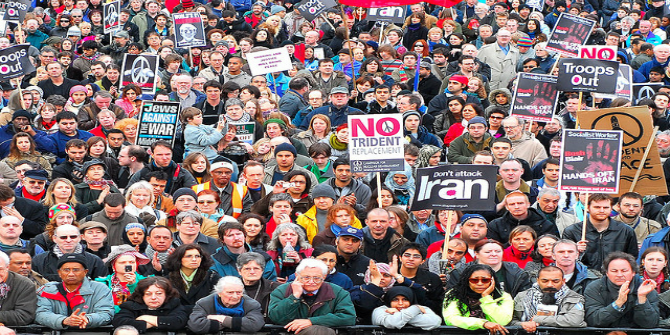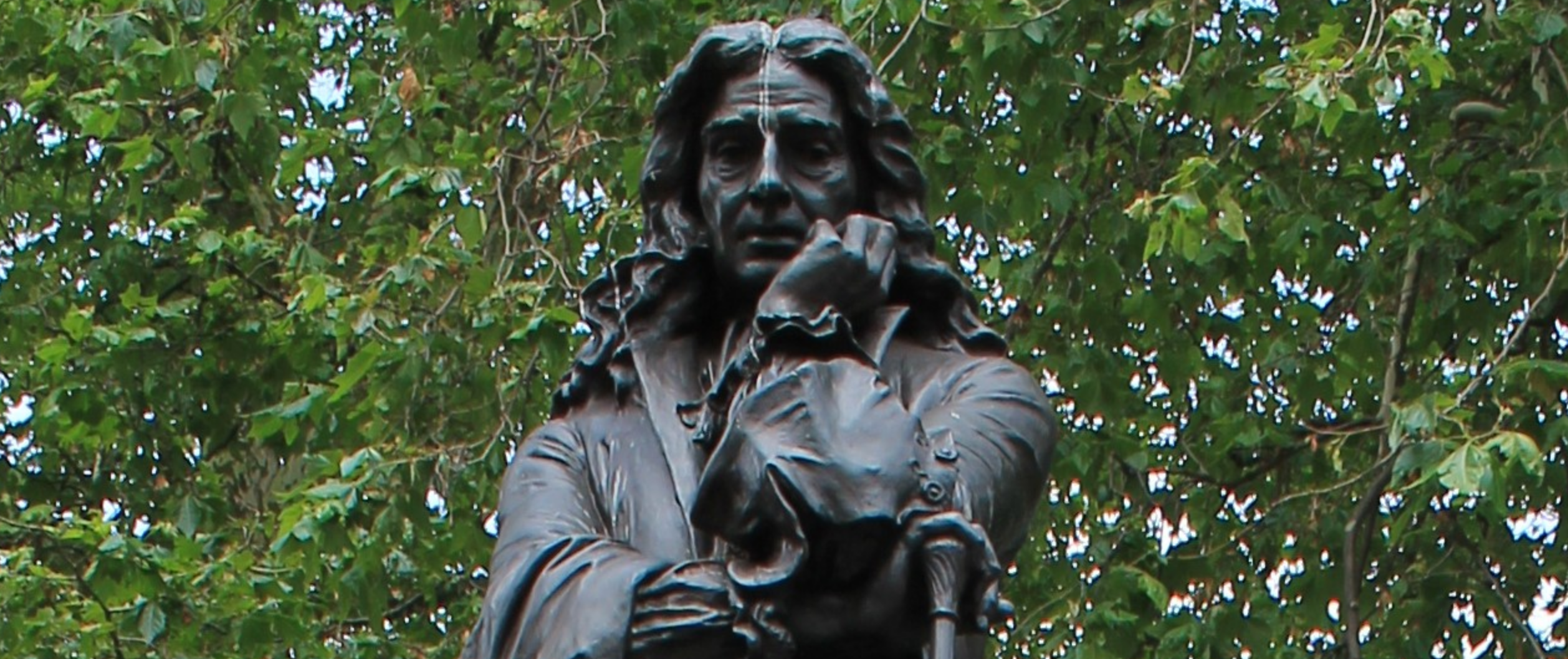 The Police, Crime, Sentencing and Courts Bill includes major proposals on crime and justice in England and Wales. David Mead writes that its introduction is an attempt to divert attention away from serious threats – such as climate change and racialised policing – and onto those who try to raise awareness.
The Police, Crime, Sentencing and Courts Bill includes major proposals on crime and justice in England and Wales. David Mead writes that its introduction is an attempt to divert attention away from serious threats – such as climate change and racialised policing – and onto those who try to raise awareness.
‘By giving the police the discretion to use these powers some of the time, it takes away our freedom all of the time’. David Lammy’s closing speech at the end of the Second Reading debate of the Police, Crime, Sentencing, and Courts Bill gets to the nub of the issue – a potentially massive increase in the power of the state to regulate protest and activism. The Bill, despite some of the hyperbole, does not remove the right to protest; it is drafted very carefully to avoid such a charge, but it does render it far more precarious, and far more in the gift of the police. If we hadn’t before, events at the Sarah Everard vigil on the night of 13 March should make us question the wisdom of this Bill very, very closely.
I will not engage with the question of the Bill’s scope and effect (see instead here and here). What I want to focus on is the parliamentary passage of the Bill, specifically the side-lining of scrutiny. There are three related issues I want to touch on: the provision of information to the public and MPs about the Bill; the speed of passage; and the need for the legislation (and, more importantly, what MPs see as the need).
The Bill had its First Reading on 9 March, and two days were set aside for the Second Reading later that month. Not only is this a 307-page, 176-clause Bill, but at least for the public order sections, there was no White or Green paper, no draft Bill. There had before been some floating of the need to make inroads though nothing officially was said before March. In late November, Netpol – the network for police monitoring – posted about plans for a ‘major crackdown on protest in 2021’, in light of talks it had had with HMICFRS. The plans were said to include equalising the power to impose conditions as between marches and assemblies; lessening of the trigger from serious to significant disruption to the life of the community; and plans to introduce stop-and-search powers to prevent such disruption. The Bill certainly covers the first, to some extent it touches on the second, but does not include the third. The provisions in the Bill that allow for conditions on noisy protests – if the noise level is such as likely to cause some serious unease, alarm or distress – is new, as is the planned power to regulate one-person protests, the power to prohibit obstructions of entry/exit into the Palace of Westminster, and plans to put common law nuisance onto a statutory footing – though the latter dates back to a Law Commission report in 2015.
Of course, the mood music has been playing for a while – most of the past 18 months have featured regular, albeit sporadic calls for action and castigation of activists, going back to evidence given by Met Commander Adrian Usher to the JCHR in April 2019, where he argued for the police to have powers to deal with unlawful protests, in total contradistinction to ECHR case law. More recently, they go back to claims made about Black Lives Matter and Extinction Rebellion, most especially the pulling down of statues and the blocking of the distribution of several Murdoch press titles in September 2020. The Home Secretary responded by labelling ‘so-called eco-crusaders turned criminals’ while some Black Lives Matter protesters became ‘hooligans and thugs’.
It was clear, then, that the tide was turning, perhaps had done so. That does not explain the Bill that has just landed, accompanied by a 161-page HMICFRS report vindicating the government’s approach. Neither does it explain the absence in the Bill of a power allowing the police to impose conditions centrally, so avoiding the restrictions of the High Court decision in the Jenny Jones judicial review. There, it was held the Met had acted unlawfully when a senior officer had imposed conditions on several cross-London Extinction Rebellion ‘pop up’ protests, since the legislation, properly interpreted, required that to be done separately at each scene.
The Bill then is something of an enigma: to what is it supposed to be a response? We soon see an enigma wrapped up in a puzzle when we consider the views expressed by Conservative backbenchers during the debate. Several (not all – see the thoughtful interventions of Stephen Hammond and Fiona Bruce) managed to convince themselves into holding two irreconcilable positions: that the Bill was proposing things not actually in it, and yet was needed to cater for things that were already covered. For instance, Gareth Johnson said that ‘the Bill seeks to balance those competing rights. It will allow protests, vigils, demonstrations and marches, but not the blocking of bridges or stopping traffic and bringing cities to a standstill. Protests, yes; causing serious disruption to others, no.’ Then, Tim Loughton warned that ‘Labour Members may try to claim that they have objections to the new public demonstration conditions proposed for preventing serious disruption to the life of the community’. Finally, Richard Drax was reassured that ‘the Home Secretary indicated in her speech that these new powers are aimed at preventing protesters from stopping people going to work or closing a city like London for days on end’.
Serious disruption to the life of the community has been the trigger for imposing conditions for 35 years, since the relevant Public Order Act 1986. There is nothing in the Bill that adds to the armoury here, yet none of those three MPs addressed the real challenge to peaceful protest, what I term an existential threat: conditions based on likely noise levels. They may simply be repeating a Whip-derived line – that the Bill does not affect the right to protest. But that is nonsense. Any increase in police power has that capacity and potential. Whether it is ever used, whether we think it should ever be used, are entirely different and valuable normative questions. But to deny that this Bill changes anything at all is false. This is compounded with the realisation that, in fact, the Bill does not deal with Extinction Rebellion protests. It does not alter the Jenny Jones decision. Neither does it deal with protests by putting common law nuisance onto a statutory footing. While it is true that since Rimmington a charge cannot be laid if there is a statutory alternative, that is the very point: either there is already an offence in an Act – charge someone with that – or if there is not, the common law provides the charge. This Bill does not change that.
We see the Bill, then, in its proper light: a lightning rod, diverting proper attention away from the imminent threat of climate change and onto those who exhort for a different way of life to tackle it, away from those subjected to racialised policing and onto those who tear down statues. The Bill is the epitome of much wider contemporary political discourse, one that allows government to cast us as good or bad, activists and citizens, reinforcing tensions and division at the expense of collective social solidarity, and for that reason alone we should oppose it.
____________________
 David Mead is Professor of UK Human Rights at the University of East Anglia. He has worked with Amnesty, Greenpeace and Liberty on protest issues, been involved with practitioners in cases up to and including the Supreme Court, and been consulted by the UN Special Rapporteurs on both Peaceful Assembly and on Use of Force. Most recently, his evidence has been relied on by the JCHR in its report on protest under COVID-19. He is a member of Netpol’s Lawyers’ Group. He is the author of The New Law of Peaceful Protest: Rights and Regulation in the Human Rights Act Era.
David Mead is Professor of UK Human Rights at the University of East Anglia. He has worked with Amnesty, Greenpeace and Liberty on protest issues, been involved with practitioners in cases up to and including the Supreme Court, and been consulted by the UN Special Rapporteurs on both Peaceful Assembly and on Use of Force. Most recently, his evidence has been relied on by the JCHR in its report on protest under COVID-19. He is a member of Netpol’s Lawyers’ Group. He is the author of The New Law of Peaceful Protest: Rights and Regulation in the Human Rights Act Era.
Photo by Edrece Stansberry on Unsplash.







